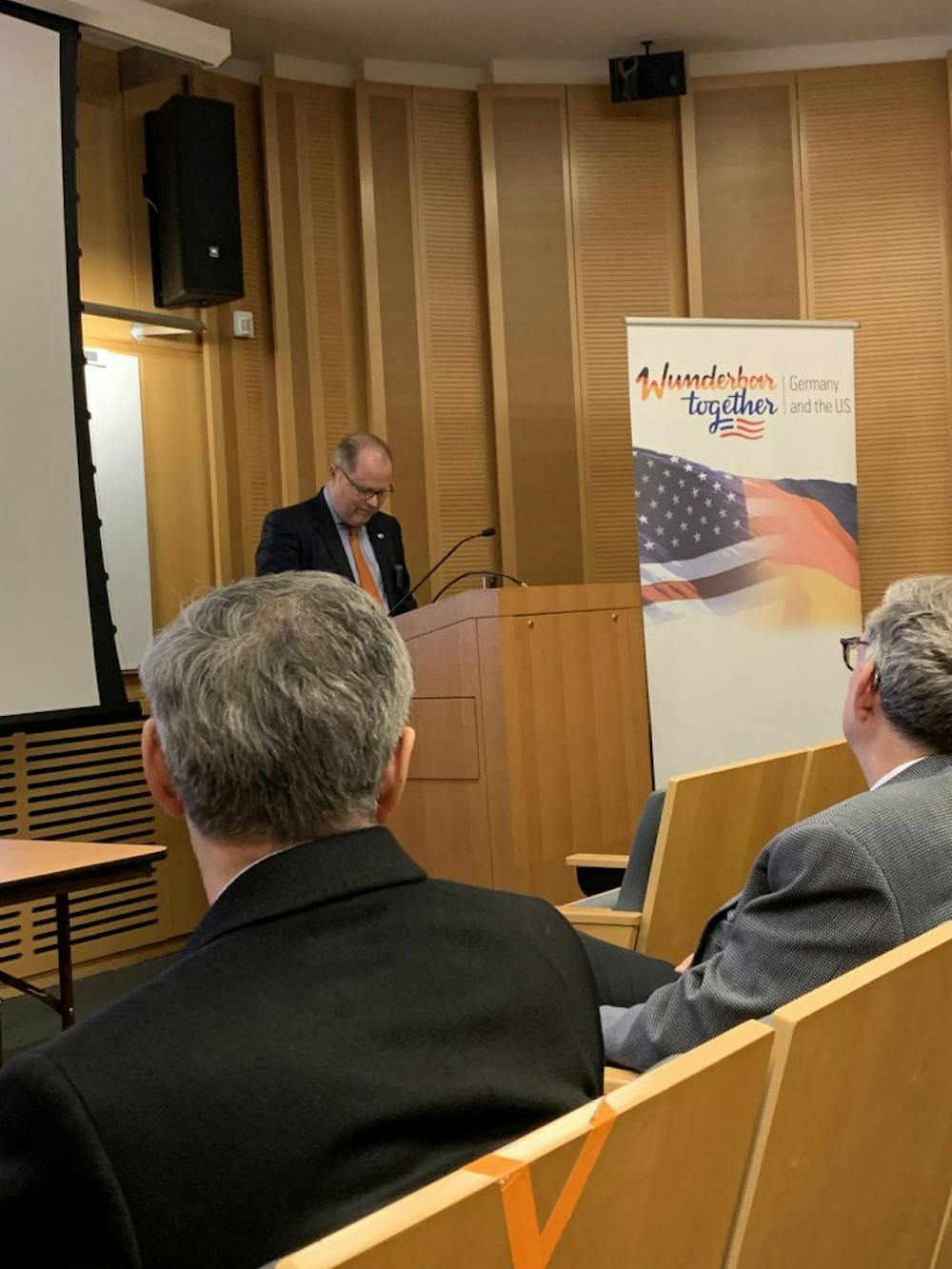The Rosenburg Exhibition made its second stop on its U.S. tour at Hopkins on Thursday, March 28. The exhibit highlighted historians’ findings on Germany’s post-World War II Ministry of Justice. Named “Rosenburg” after the Ministry’s first official residence, the display showcased the many former Nazi party members that served as judges, jurists and lawyers for the Nuremberg trials. The exhibit will be on display until May 1.
Professor of History Peter Jelavich introduced the exhibition with a brief lecture about the historical significance of life in Germany after World War II. He noted that although the Allied powers instituted programs of denazification, there were too many Germans affiliated with the former political party for them to work effectively.
“Half a million people, mostly Germans, helped in the extermination of six million Jews throughout Europe,” Jelavich said. “Beyond that, there were all of the other pre-war and wartime crimes committed by millions of followers of the Third Reich. By 1948, this impossible process of denazification had ground to a halt and ultimately, few Nazis faced justice.”
He went on to explain that testifying against the Nazis was risky, noting that only one German agreed to testify at the Nuremberg trials, only to receive death threats and consequently have to flee the country.
Nazi principles remained ingrained in Germany’s climate, according to Jelavich. In 1950, half the departmental heads of the Ministry of Justice were former Nazi party members.
“By 1958, almost all Germans who had been convicted of crimes, including war crimes, had been set free,“ Jelavich said.
It was not until the late 1960s and early 1970s that Germans rallied against continued Nazi influence in their governmental departments. Jelavich cited youth protests, the decriminalization of homosexuality and public acknowledgement of the Holocaust as examples of this movement.
Today, Jelavich said German governmental departments are reviewing their Nazi pasts and publishing their findings through venues such as the Rosenburg exhibition.
Dean of the University Libraries, Archives, and Museums Winston Tabb emphasized the exhibition’s global and relevance to today’s human rights concerns.
“Given what’s happening now in the U.S., with concerns about Confederate statues and other things that we need to be confronting in our own past, and the way with which the Germans have gone about doing this, owning this bad history and explaining what happened and not trying to hide it is really a good model for all of us,” Tabb said.
Baltimore resident Kurt Wittstadt appreciated the exhibit’s focus on the lesser-known parts of Germany’s postwar history.
“I learned about some of the inner workings of postwar Germany. [It is an] interesting side that you don’t always know about, the pieces that are in place that continue to have effects two or three generations later,” Wittstadt said.
Rachel Juieng contributed reporting.





